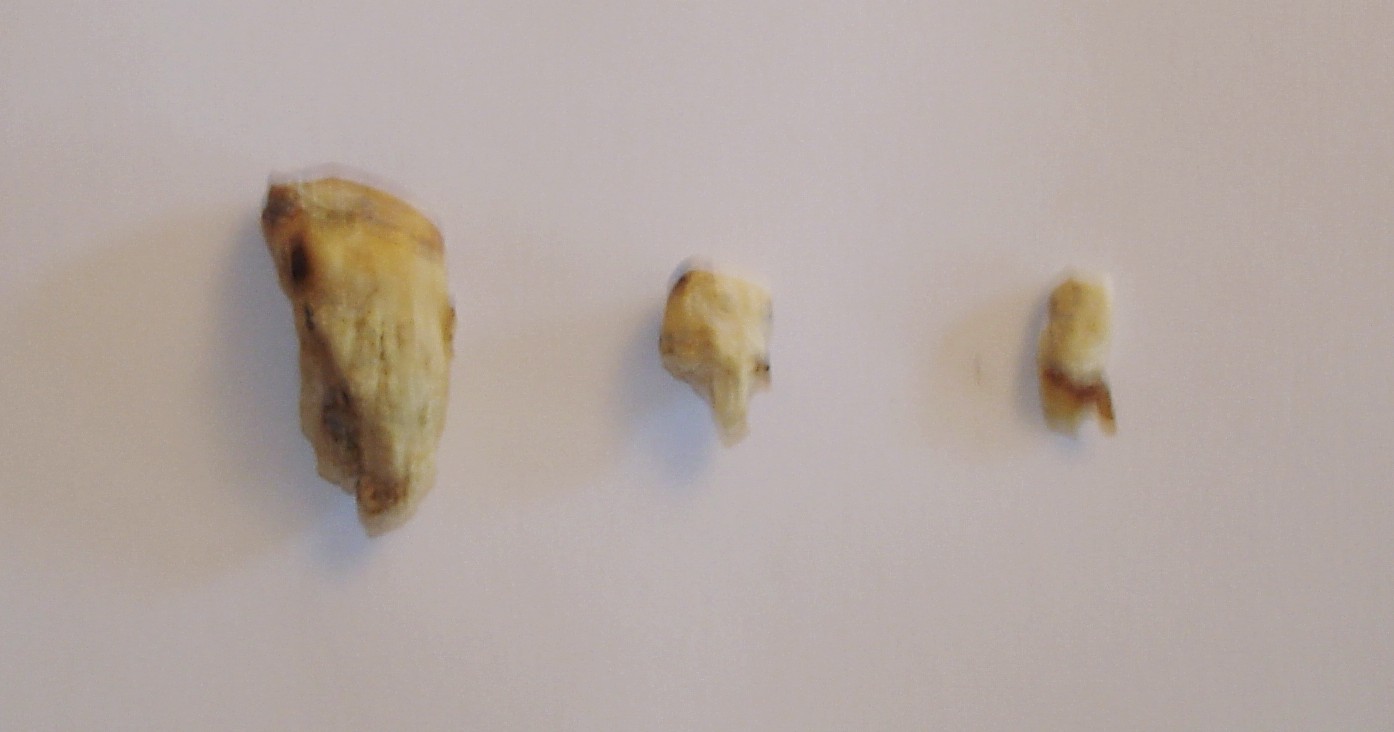
Equine Dental technician
The partner indispensable for your cavalry
Balance, health, profitability are the keys of your success
 |
Equine Dental technician |
|||
The partner indispensable for your cavalry Balance, health, profitability are the keys of your success
|
||||
| Home | Why an equine dentist ? | Pathologies | Teeth and age of the horse | The intervention | My course | Contact et Tariffs |
|---|
VARIOUS PATHOLOGIES
Surdents / sharp ramps The teeth of the horse grow permanently and more or less according to the horses, but the chewing movement is not suffissant to use the dental table uniformly, the consequence is the appearance of cutting and sometimes pointed dental asperities. The majority of équidés is subjected to this problem without an annual levelling. The consequences appear by: pains on the level of the cheeks and/or tongue and thus a bad chewing and a wasting of badly introduced and badly digested food.
|
||
| The hooks | ||
| les surnuméraires | ||
| Tartar | ||
| The caries | ||
| deformed jaws | ||
| Pig teeth | ||
| other affections | ||
Wolf teeth
|
 woth teeth woth teeth |
|
Hooks Like the surdents, hooks are formed in front of the first premolars (defense in contact with the bit*) and behind of the last molars: those are wounding and force the movements of the jaws and of the head, the consequences are direct on the cervical pains, the flexibility of the back and obstruction of the sinus. * To improve the contact of the bit and the mouth of the horse, the dental technician can round the first premolars and thus create : the “Bitseat” The canines present in the males (and certain females known as bréhaignes) can sometimes be very developed and pointed, at the point to wound the opposed gum, the role of the dentist will be then to decrease them and to round them.
|
||
|
The case or of the horses has teeth in less is also noted: old horses, broken teeth….
|
 |
|
Tartar This mixture of food residues, saliva and the bacterial metabolism is known also under the name of limescale, it is more or less present (at the base of the tooth) according to individuals'. Sometimes it is not awkward, but if it is too present he causes an affection of the gum, it will have then to be withdrawn.
|
tartar on the canine teeth |
|
The caries / teeth Decays Enough rare in the horse, one often detects them because of stinking breath of the animal, on the other hand they are not often painful. When they become it, it is frequently too late, the decay became a pulpitis and the solution to be considered consequently is the extraction of the tooth. |
||
Jaws deformed
Then two other types are noted: “The parrot mouth ” (the upper jaw is longer than the jaw lower) and opposite: “the pig mouth”
|
||
|
© |
Teeth of pig It is about the appearance at certain individuals, of two teeth “vestiges” in front of the jaw lower.
|
 |
Other oral affections: pulpitis, scar … We saw the most known affections above, some are very current, others rarer, on the other hand there is well of different evils even more specific and varied. I will try in the future to enrich this chapter. |
 |